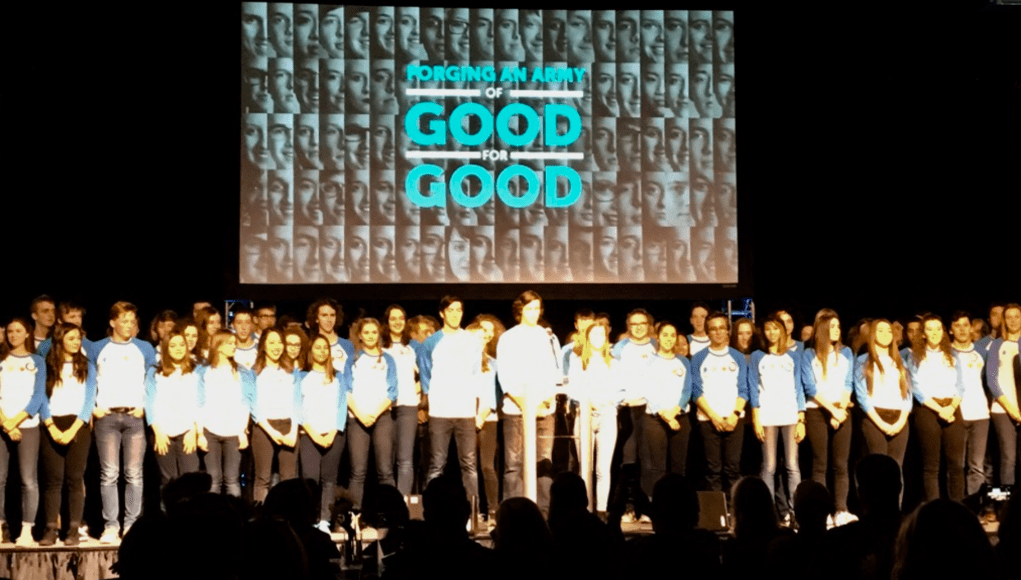On Breaking Convention

Every week our president breaks another convention, he opts out of a G7 communique or criticizes the Fed. Decorum and tradition seem to be out the window with the morning tweets. Strategic or self-aggrandizing? It’s hard to assess the mix at this point but it is what he promised.
Beyond the daily news, young people experience an unprecedented amount of precedent breaking: unpredictable weather, new forms of currency, and new internet business models.
As we reported in our paper on the future of work, young people will face more novelty and complexity that we can imagine–something maybe five or ten times as much as I did even with my Information Age career.
We owe it to the next generation to get them ready–both for how to cope with all the convention breaking but also a framework for how and when they should break convention.
Rebel With a Cause
Francesca Gino, a social science professor at Harvard Business School, who has spent much of her career studying convention breakers. “Rebels are people who break rules that should be broken,” said Gino. “They break rules that hold them and others back, and their way of rule breaking is constructive rather than destructive. It creates positive change.”
Gino notes the example of iconoclastic Italian chef Massimo Bottura who often starts the day by sweeping the street outside the restaurant (a little leadership by example). He uses unconventional means to motivate his staff, like asking them to create a dish inspired by a song.
To break convention, Gino stresses the importance of thinking like a beginner. And since that’s hard for experts, she urges including beginners in the process to introduce good questions and fresh ideas.
Belgian nonprofit MyMachine is a great example of innovation spurred by beginners. They ask children what their dream machine would do and then asks design students to help them prototype it. The naive dreams of the children are sometimes silly but often profound.
Design Thinking Challenges Convention
Students at One Stone, an innovative Boise high school, use design thinking to challenge convention in their project-based curriculum and across the community.
Adapted from Stanford’s d.School, the One Stone approach starts with seeking to understand, then, through user experience interviews, exercising empathy with people impacted by a particular context or challenge. With potential users, solutions are constructed and tested. It’s breaking convention but often incrementally and usually with people that might be impacted.
One Stone isn’t alone, there is a growing army of schools applying design thinking to challenges big and small including many in southern California: High Tech High, Design 39, and Del Lago Academy to name a few. But the movement in nationwide. Check out Purdue Polytech in Indianapolis, and great Pittsburgh area districts like Montour and South Fayette.
Be Intentional About Being Unconventional
Conventions exist for good reasons. They are the fabric of trust that forms the basis of culture.
Community, as theologian Henri Nouwen said, is obedience practiced together. Conventions build trust that enable a functioning society.
But some conventions get stale and need to be updated. We come to understand others as being repressive for underrepresented groups. A convention is worth breaking when it could boost equity–when there is an opportunity to share access, to offer dignity, to lift, to teach, to heal, to care.
Breaking conventions may have benefits but it almost always comes at a cost. Adam Posen, President, Peterson Institute for International Economics, said Trump’s unconventional actions are killing foreign investment in the US. People invest where they can anticipate favorable results, but Trumps “hostility to globalization is ruining the United States’ attractiveness as a place to do business,” according to Posen.
Julia Freeland Fisher from the Christensen Institute is a leading advocate for disruptive innovation. But she’s also mindful that disruption involves winners and losers–and sometimes unintended consequences. Speaking to One Stone students high school about disrupting for good, she asked them to keep potential losers in mind and look for ways to avoid the downside of change.
Students at the new generation of design-focused schools like One Stone learn to break conventions not to draw attention, but to make things better. Posen and Fisher add a reminder that when breaking convention, we should consider all the potential unintended consequences.
For more, see:
- Using Design Thinking to Disrupt for Good
- What’s Up With All the Design-Focused Schools? (podcast)
- Student-Led One Stone is Transforming Boise (podcast)
Stay in-the-know with all things EdTech and innovations in learning by signing up to receive the weekly Smart Update. This post includes mentions of a Getting Smart partner. For a full list of partners, affiliate organizations and all other disclosures, please see our Partner page.






0 Comments
Leave a Comment
Your email address will not be published. All fields are required.